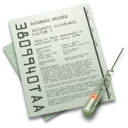|
Mine Safety Week 2004 reminds
us how unsafe corporate mining is
Statement
on the Occasion of Mining Safety Week 2004 by Save
the Abra River Movement
Mine Safety Week is an occasion to remember how UNSAFE large-scale
mining is. According to the International Labor Organization, mining
accounts for only 1% of the global workforce yet it is responsible
for up to 5% of fatal accidents at work (15,000 per year or 40 each
day). From 1980-1986, the National Traumatic Occupational Fatality
(NOTF) surveillance system of the US National Institute of Occupational
Health and Safety (NIOSH) concluded that the highest annual fatality
rates were in mining (28.1 per 100,000 or 0.28%).
Just how UNSAFE corporate mining is has been documented in the
second part of Dr. Ana Leung’s study entitled “Health
Profile of Communities Living Near Corporate Mining Operations in
Mankayan, Benguet”. This study won First Prize in the Poster
Exhibit Contest of the 5th Health Research for Action National Forum
held last June 2004, under the auspices of the Departments of Health
and Science and Technology.
Based on interviews and physical examination of 88 Lepanto workers,
major findings of this study showed that:
- In 2002, 2 Lepanto mineworkers died at work. In 2003, there
were 5 work-related deaths. And in the first quarter of 2004,
there had already been 1 death.
- 3 out of every 4 Lepanto mineworkers had suffered some sort
of injury at work. These ranged from simple cuts and bruises to
fractured bones or loss of a part of the body. Majority of these
injuries involve rock or timber falling on the miners.
- There was an observation by some workers that supervisors try
to convince them not to report their injuries so that these are
not included in official records. Others who are confined in the
hospital or at home are asked to sign the time-in record so that
no lost-time is reported. There is also a perception among the
workers that not all information about their illnesses is revealed
to them at the company hospital. Many prefer to have their x-rays
and laboratory examinations done outside even if they have to
pay for these themselves.
- Use of personal protective equipment is inconsistent. Only 1
out of 2 workers wears a safety belt; only 1 out of every 5 wear
gloves. Only 1 out of every 4 wear ear plugs. Workers report that
it is the workers’ responsibility to ask for replacement
of worn-out equipment such as ear plugs. Oftentimes, these are
out-of-stock and the worker has to keep coming back to the supplies
office. Respirators lack cartridge replacements. Workers improvise
by using a towel or cloth to cover their nose and mouth from dust.
- Major hazards to which underground mineworkers are exposed
include: extreme heat, vibration of vehicles, drills and other
equipment, loud noise from blasting, thick dust and fumes, and
the carrying of heavy loads and strain of maintaining awkward
positions for prolonged periods of time.
- Despite all the dangers they face daily, the average salary
of the mineworkers was only PhP 295.50 per day.
The findings of Dr. Leung’s study are consistent with other
studies made including:
- A 1997 study of underground gold mining in Itogon, Benguet (by
the Institute for Occupational Health and Safety Development)
reported being hit by falling objects as the leading type of accident,
followed by suffocation from chemical fumes, crushing injuries
involving the fingers, foreign body in the eye, fractures and
dislocations of bones, accidental fall, electrocution, punctured
wounds, pinning by slabs/ lumber/ mine car, accidental finger
amputation, accidental blindness and being buried during an erosion
or rockslide.
- Dr. Ponciano Aberin, chief of DOH-CAR’s People with Disability
Affairs, conducted a study in December 2003 among mining communities
in Benguet. His research showed that many miners suffer from hearing
defects due to the effects of blasting in underground tunnels.
But it is not only the mineworkers who suffer the ill effects of
mining-for-profit. The Save the Abra River Movement continues to
bear witness to the continuing damage that Lepanto has wreaked on
the Abra River system. Its recent Environmental Investigatory Mission
has shown that corporate mining continues to be UNSAFE FOR THE ENVIRONMENT
and UNSAFE FOR THE COMMUNITIES living near Lepanto’s operations.
Stop Lepanto expansion! Clear the Abra River!
Workers’ occupational health and safety first before corporate
profit!
Oppose environmental destruction and peoples’ displacement
in the name of corporate profit!
|
|
